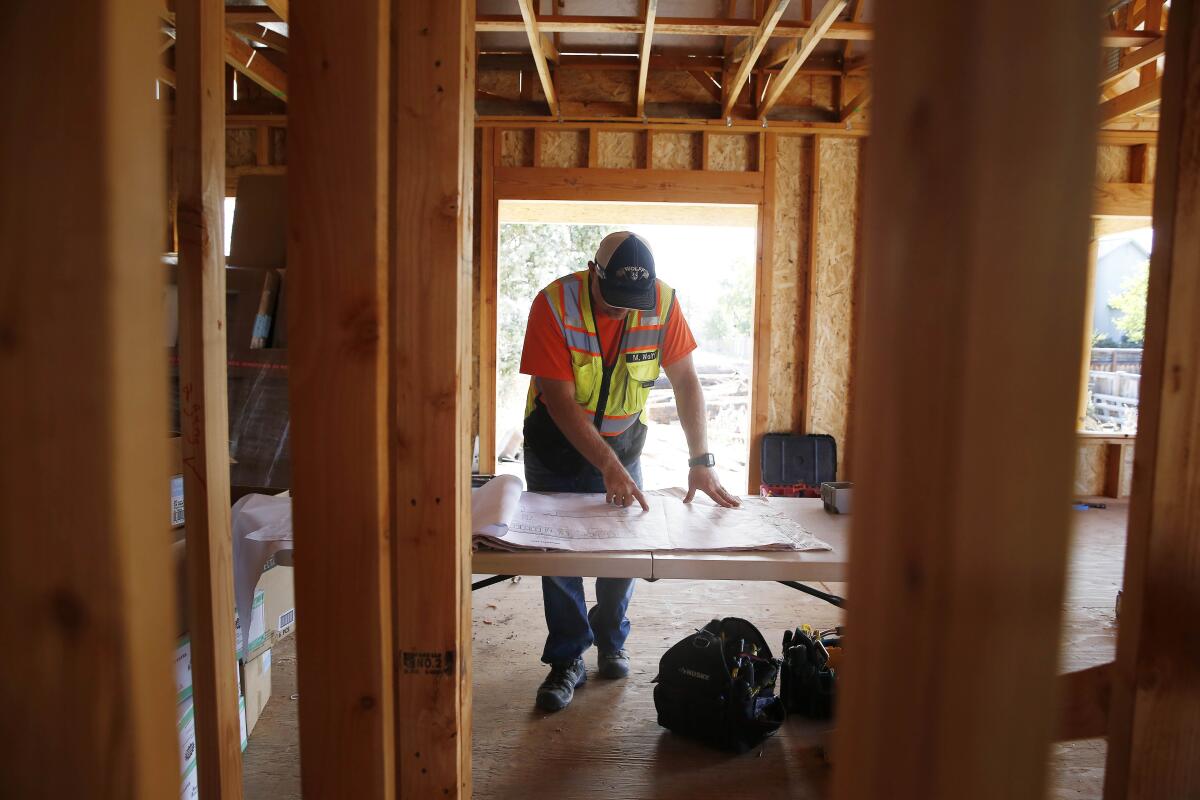Hoping to build an ADU? New grants can help low-income Californians get started

- Share via
State officials have revived a popular grant program to help lower-income California homeowners build accessory dwelling units by covering some of the upfront costs. But funding is limited, so demand for aid may soon outstrip the supply of dollars.
The California Housing Finance Agency’s ADU Grant Program offers up to $40,000 to qualified homeowners to cover pre-construction costs of an ADU, including planning and permit fees for the structure. The program exhausted its initial $100 million months ago, causing the agency to stop taking applications; now, $25 million more is available for homeowners seeking help.
Obtaining a grant is not as simple as filling out a form online, however. For starters, applicants have to meet the program’s new income limits. Household income must be less than 80% of the area median income, which translates in Los Angeles County to $84,160. That’s down from 150% of the area median income in the initial round of grants.
Applicants also need to work through a state-approved lender or “special financing participant” because the grants aren’t paid to homeowners — they’re paid to lenders. The CalHFA website lists 18 participating lenders as well as 10 governmental or nonprofit agencies, including Neighborhood Housing Services of Los Angeles County, which specializes in affordable housing.
Typically, homeowners must obtain a construction loan for an ADU from a participating lender before seeking an ADU grant. The loan will cover the costs that the grants will reimburse, including architectural designs, permits, soil tests, impact fees, property surveys, energy reports and utility hookups, the agency says. These expenses can make up a sizable portion of the cost of a new ADU, especially one built by converting a garage or other existing structure.
Small-space living is a big trend in Southern California. Get inspired by these local ADUs and learn how to plan your own build.
If you haven’t started work on an ADU yet, let alone obtained a loan, you can still get in line for a state grant. Neighborhood Housing Services, which provides construction loans for ADUs, says it will try to reserve a potential grant for anyone who emails it two pieces of information: a current mortgage statement and one month’s worth of pay stubs or other proof of income. The information, which should be sent to [email protected], should also include the person’s legal name, address and Social Security number.
A homeowner who meets the income limits but can build an ADU without a loan can still apply for a grant through NHSLA. But the agency’s construction team would have to manage the project and the grant funds, said Iris Cruz of Neighborhood Housing Services.
Grant applicants will have to sign and submit an affidavit to CalHFA attesting to several things about themselves and their plans, including that they are a U.S. citizen or legal resident; they own and have their primary residence on the property where the ADU is being built; they will use the ADU for permanent housing or long-term rentals; and the ADU will conform to local building and zoning codes. If any of those statements prove to be false, the applicant could face a prison term and a fine of up to $10,000.
The lender, meanwhile, will have to attest that the grant applicant meets the program’s income limits.
More to Read
Sign up for Essential California
The most important California stories and recommendations in your inbox every morning.
You may occasionally receive promotional content from the Los Angeles Times.












